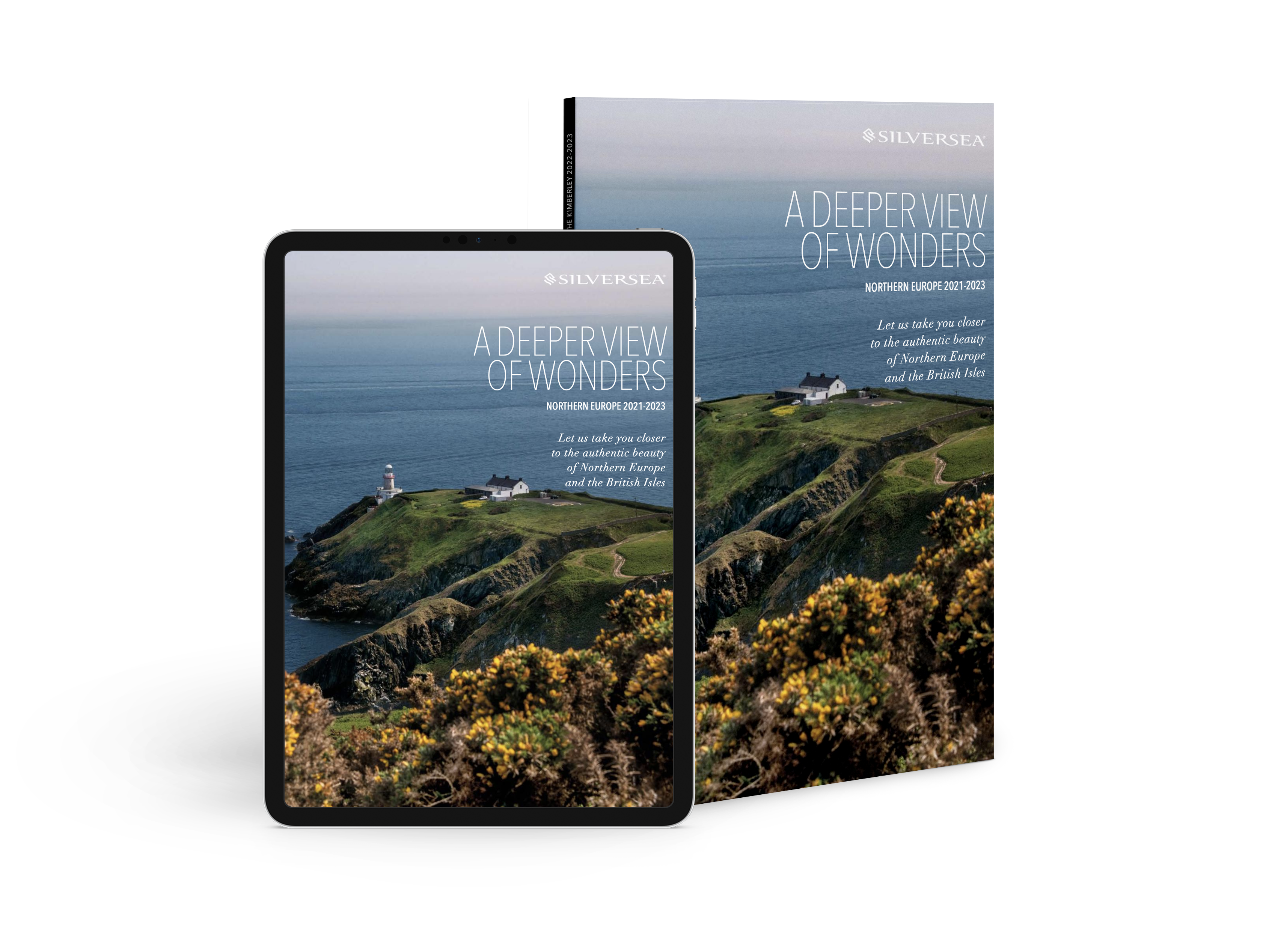Nordeuropa & Britische Inseln
Magische Mysterien und der Zauber der Mitternachtssonne
FINDEN SIE IHRE KREUZFAHRT
Nordeuropa & Britische Inselnträume
Auf einer Silversea-Kreuzfahrt erwartet Sie ein einzigartig persönliches Reiseerlebnis. Unsere kleinen Schiffe navigieren mühelos durch enge Wasserstrassen und laufen auch abgelegene Häfen an, sodass Sie Ihren Reisezielen ganz besonders nahe kommen. Während andere Kreuzfahrtanbieter grosse Umwege fahren müssen, bringen wir Sie durch den Nord-Ostsee-Kanal direkt ins Baltikum.
Diese Flexibilität und dieses besondere Freiheitsgefühl wissen unsere Gäste zu schätzen.
-
-
-
-
-
-
-
-
-
-
-
-
-
-
-
-
-
-
-
-
-
-
-
-
-
-
-
-
-
-
-
-
-
-
-
-
-
-
-
-
-
-
-
-
-
-
-
-
NORDEUROPA-BROSCHÜRE

Fordern Sie eine kostenlose Nordeuropa-Broschüre an
Intensiveres Reisen
UNSERE SCHIFFE IN DER NORDEUROPA & BRITISCHE INSELN
Silver Cloud
Mit 20 brandneuen Zodiacs, vier superlativen Restaurants und einer Expeditionsroute von Pol zu Pol bricht die Silver Cloud wirklich das Eis zwischen Expedition und Luxus.
- besatzung an bord212
- Gästekapazität254
- Suiten127
- speisemöglichkeiten4
- Dolce Vita
- Zagara Beauty Salon
- Pool Deck
- Rezeption
- Fitnesscenter
- Connoisseur’s Corner
- Observation lounge
- Boutique
- Explorer Lounge
- Panorama Lounge
- Zagara Beauty Spa
- Fotostudio
Silver Dawn
Eine neue Morgendämmerung zieht herauf! Unser zehntes Luxusschiff wurde im April 2022 in unsere Flotte aufgenommen und wird auf weltweiten Reiserouten eingesetzt, die authentische und intensive Erlebnisse versprechen.
- besatzung an bord411
- Gästekapazität596
- Suiten298
- speisemöglichkeiten8
- S.A.L.T. Bar
- S.A.L.T. Lab
- Panorama Lounge
- Casino
- Dolce Vita
- Fitnesszentrum
- Otium Spa
- Observation Library
- Connoisseur’s Corner
- Arts Café
- Pool-Deck und Whirlpool-Bereich
- Boutique
- Otium Beauty Salon
- Venetian Lounge